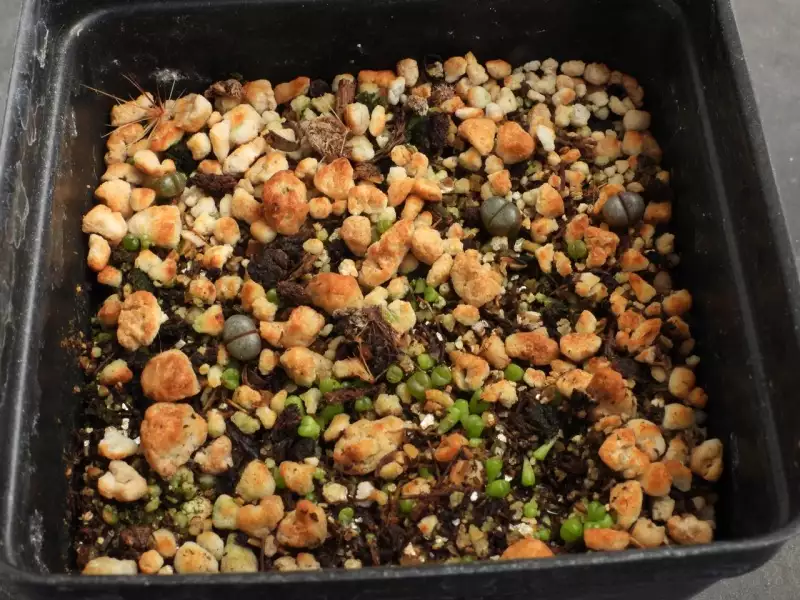
|

|
Lithops verriculosa C 200 B MG1759 12/20/21
(sowings 1/11/20, 1/28/21, 10/23/21 )
Now come a bunch of pictures that can only we taken in fall and winter. That is, most of the South African Mesembryanthemums (= "midday flowers" = "mesembs" for short) flower in fall and winter, because the historical climate in South Africa (geographically, not politically) is ridiculously inimical to plant life. Many plants do as little as possible during a South African summer. This picture is of three seedings I did over three seasons in a pot 3.5" (9 cm) on a side. A "season" is fall/winter; many mesembs need cool temperatures for significant germination. The pale green little things are new seedlings from an October 23, 2021 seeding. There are four grayish blue plants about 10 times bigger than the green things. These are the same species as the green, but a year older. That is, they resulted from a January 28, 2021 sowing. They actually are from a sowing as numerous as the green. Four is not a great survival number. There was a third sowing, in October 2019. Not a single plant from that sowing has survived. I have no idea why. It's obvious in the 4 grayish plants, but it's also present in the green plants - there is a split in the plant. This is a division between the two leaves that make up the plant body of the typical Lithops plant. In contrast to cacti, which are stem succulents (the water-impregnated fleshy body corresponds to a plant stem), Lithops (and many other mesembs) are leaf succulents. That is, what you see as the plant body corresponds structurally to two leaves.
(You may notice that there are two cactus spine clusters in this picture. Greenhouse plants are not routinely blown free of detritus by the wind. The greenhouse management has to clean up the garbage. If you look real carefully, you'll find a tiny baby cactus very close to the top margin of the soil. Stray seeds get blown all over the greenhouse by the ventilation fans. Wow. I think I see another cactus weed northwest of the right-most older Lithops seedling.) (11/32)